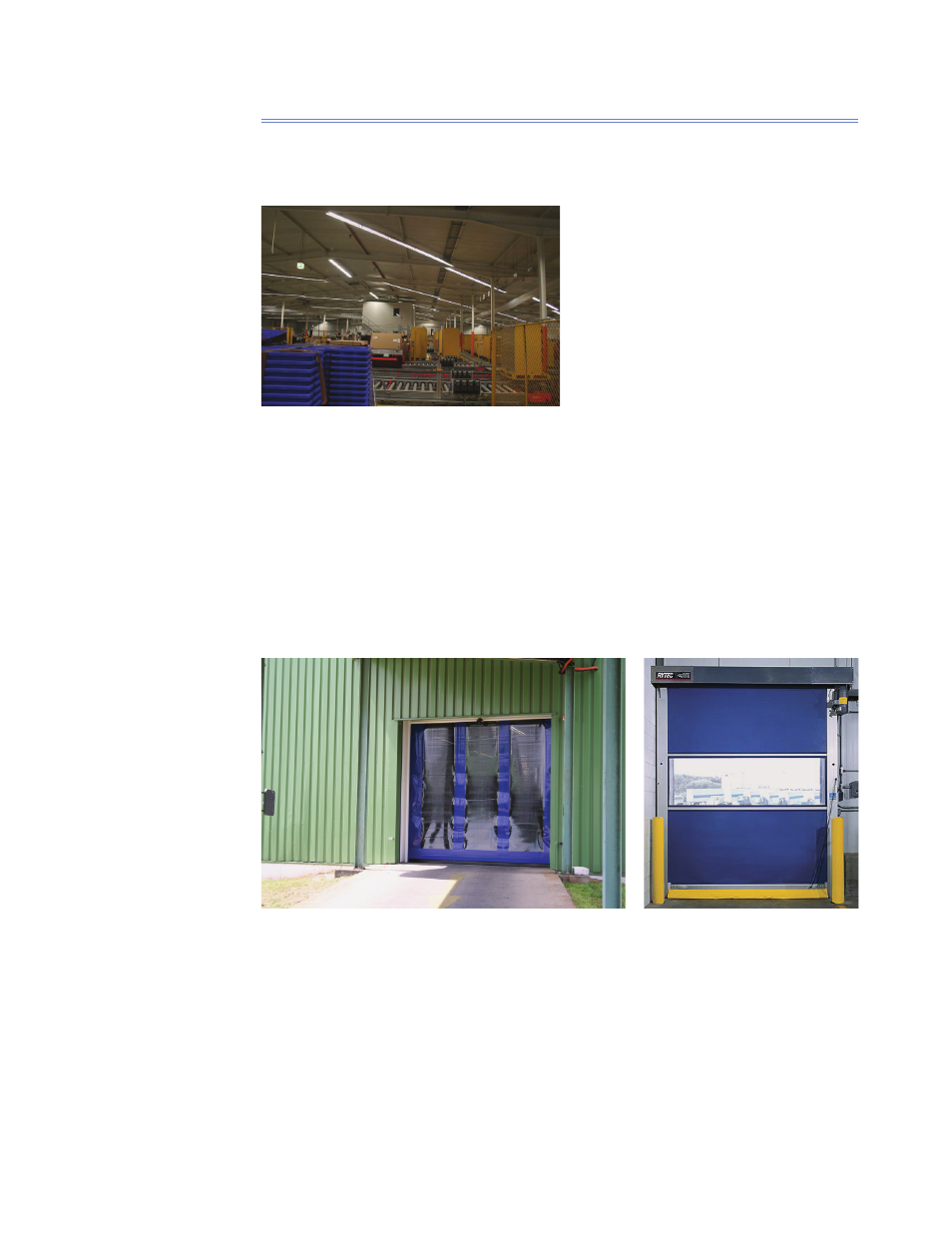Retrotec USACE User Manual
Page 260

D130 ENERGY & PROCESS ASSESSMENT PROTOCOL
D.7.9 Storage
D.7.9.1 Maintaining Space Temperatures over 20 °C (68 °F) in
Winter (Waste)
Figure D212. Shipping area of storage
building.
Storage spaces do not have high levels of occupancy, and those that are in these
spaces tend to be constantly moving. These individuals are often required to
travel from their own building to other nearby buildings. Thus, they go outside
some of the time that they are working. As a result, they wear heavy clothing in
winter and are thus comfortable at temperatures lower than those in other work-
spaces. If there is an area for shipping or receiving where workers stay all day
(Figure D212), this space could receive supplemental heating for their comfort.
D.7.9.2 Slow, Large Doors Used for Bringing Goods In and Out
(Waste)
Figure D213. Example high-speed doors used in warehouses.
Many older warehouses have doors that are very slow—taking 30 seconds to
even minutes to open and close a door is common. Frequent opening and clos-
ing of doors in warehouses due to movement of traffi c results in signifi cant heat
losses during the cold season. Automatic “speed” doors operating via motion
sensor (Figure D213) allow personnel on forklifts to move freely while saving
energy.
